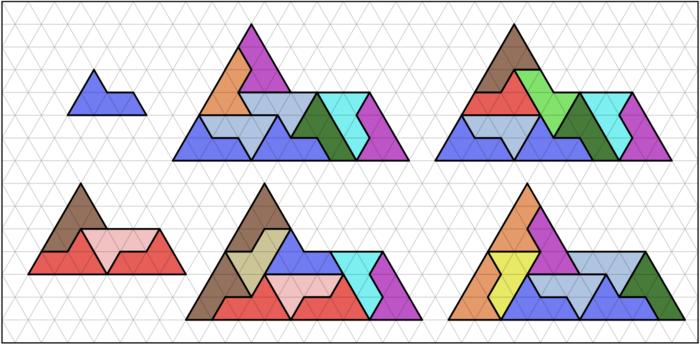Why is the heart slightly on the left side of the body for most people? Why is DNA almost always a right-handed helix? Same with alpha helices, the building blocks of proteins. Chirality, or handedness, is everywhere in biology, but the reasons can be a mystery.

Credit: Huber, et. al, Physical Review Research, 2024
Why is the heart slightly on the left side of the body for most people? Why is DNA almost always a right-handed helix? Same with alpha helices, the building blocks of proteins. Chirality, or handedness, is everywhere in biology, but the reasons can be a mystery.
Greg Huber, a biophysicist and researcher at the Chan Zuckerberg Biohub San Francisco, spent three years exploring these questions and more using a simple asymmetric shape that lives on the triangular lattice, and that has received little academic attention – the sphinx tile. He and his collaborators – Craig Knecht, Walter Trump, and Robert Ziff – found unexpected properties related to its chirality. Their study, “Entropy and chirality in sphinx tilings,” was published recently in Physical Review Research.
Composed of six equilateral triangles (a hexiamond), the sphinx has an intrinsic handedness, coming in either left- or right-handed orientations. It is the only known asymmetric hexiamond that can tile every order of itself, meaning all sphinxes scaled by a factor n can be tiled by n•n smaller unit sphinxes. In other words, an order-2 sphinx can be made from 4 sphinx tiles, an order-3 sphinx can be made from 9, and so on. The numbers of tile arrangements or layouts possible, beginning from the single unit sphinx, start out small: 1, 1, 4, 16, …, but not for long.
As the number of sphinxes in a tiling goes up, the number of possible layouts increases superexponentially. For example, an order-5 sphinx has 153 possible tilings (shown below), order-6 has nearly 72,000 tilings, and order-13 a whopping 1030, or 10 to the order 30! (That’s a 1 with 30 zeros.)
The asymmetry of the tile provided rich avenues to explore chirality. Take the simple matter of placing two tiles side by side. There are 46 (or 47, depending on how you count) different ways for two sphinx tiles to form a dyad. (In contrast, there is only one way for two unit squares to form a dyad.)
And they can be tiled in such a way that they have low chiral energy, meaning most neighboring sphinxes are in the same orientation or high chiral energy.
Huber, leader of the Theory Group at the San Francisco Biohub, emphasizes that this endeavor was more than an abstract exercise. He notes that geometry and chirality both have important but often overlooked connections to biology. Virus capsids, for example, have a geometric symmetry (the “quasi-equivalence principle”) based on the same lattice.
“The universe shouldn’t favor one handedness over another, but at scale after scale, chiral preferences emerge,” Huber says. “Chirality can be very mysterious, and the sphinx tiles’ surprising chiral interactions were the motivation for this work.”
Journal
Physical Review Research
DOI
10.1103/PhysRevResearch.6.013227
Article Title
Entropy and chirality in sphinx tilings
Article Publication Date
4-Mar-2024




